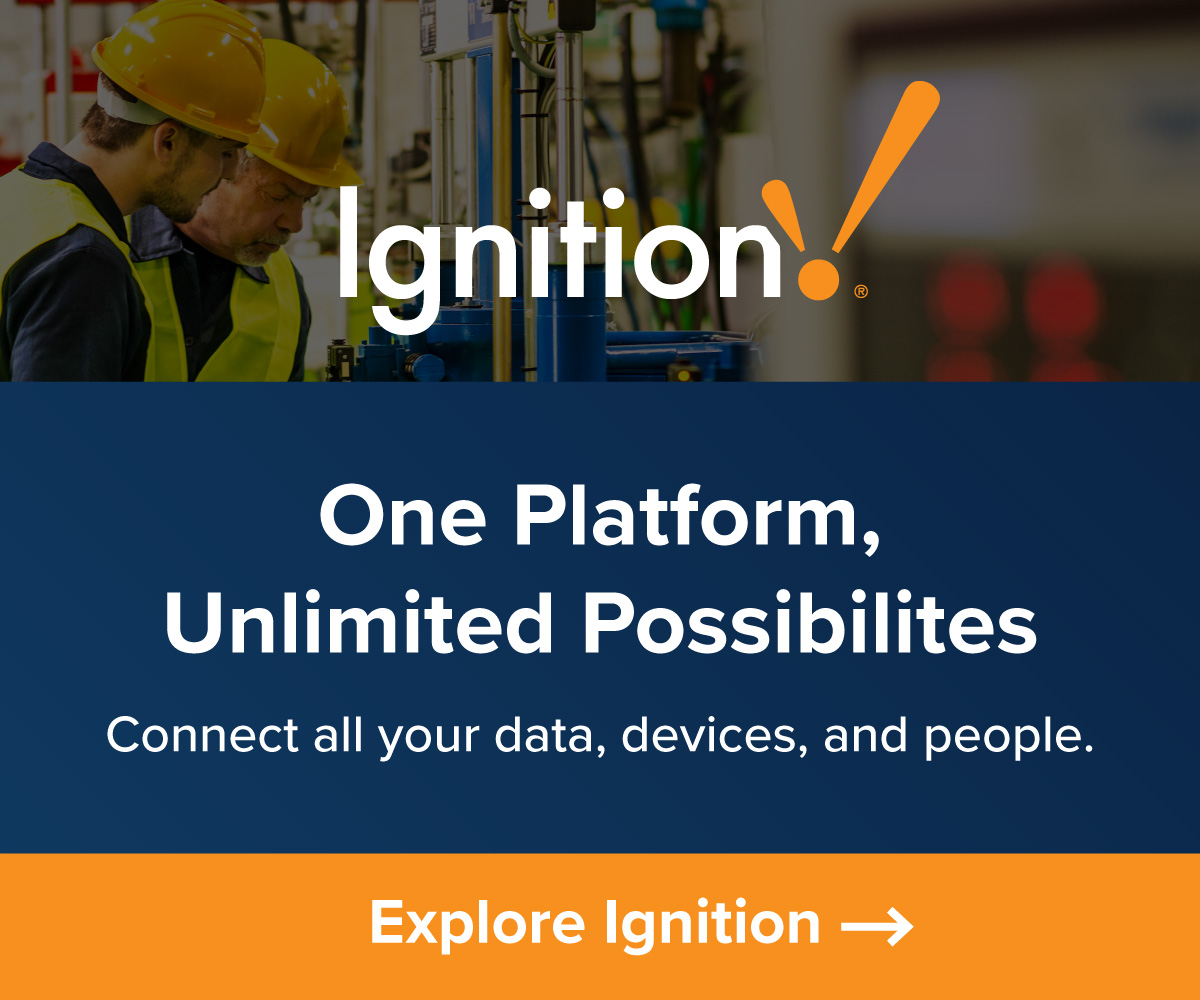by Gary Mintchell | Apr 25, 2025 | Generative AI, Manufacturing IT
AVEVA held its AVEVA World event a couple of weeks ago in San Francisco. I was not in attendance. I also didn’t see a bunch of news. There is this one piece I saw. Partnerships being all the major trend lately, several partnerships were announced.
- AVEVA is partnering with Databricks to revolutionize industrial operations with a secure and open approach to data and AI.
- AVEVA is also announcing a strategic partnership with Track’em, a cutting-edge material tracking and mobility solution provider, to deliver real time visibility and cost control in capital projects.
Parsing through the marketing speak, the company is using generative AI for piping design. I’ve seen a few companies finding a use for the new hot tech assisting design engineers.
by Gary Mintchell | Apr 24, 2025 | Manufacturing IT
Catching up on some older news items from earlier this month. This news from Yokogawa shows how process automation companies have had to expand their offerings and problem sets to solve in this era of process automation and control market maturity. This new product is said to deliver holistic lifecycle management and operational excellence.
Yokogawa Electric Corporation announced the launch of OpreX Plant Stewardship, the most comprehensive lifecycle service program in the company’s OpreX Sustainable Maintenance family, to support customers in achieving and sustaining operational excellence.
OpreX Plant Stewardship offers a tailored, performance-based approach that strategically addresses the ever-evolving challenges faced by customers, enabling them to mitigate risks, effectively manage operational challenges, and achieve key performance indicators across all levels of their organization. OpreX Plant Stewardship is available in all regions outside of Japan.
With the acceleration of plant complexity, IT/OT integration, cybersecurity threats, and a shortage of skilled resources, traditional product-centric maintenance methods are no longer sufficient. In response to these issues, Yokogawa has expanded its lifecycle services portfolio with a program that ensures service performance across systems, field instruments, analyzers, software, and applications.
Main Features
1. A customer-centric lifecycle approach
OpreX Plant Stewardship is a service program designed through a strategic framework to drive long-term operational excellence. By proactively and systematically addressing risks and challenges, organizations can align their operational strategies with business objectives. Through this approach, Yokogawa works closely with various stakeholders across different levels of the customer’s organization, helping customers navigate complex demands and ultimately find the economic optimum that balances performance, cost, and sustainability.
2. Comprehensive coverage of five dimensions
Leveraging decades of domain expertise, Yokogawa’s service approach is built to provide coverage on five essential dimensions that drive a well-operated, efficient, and resilient business throughout the plant lifecycle:
- Safety & security: Ensuring robust operational safety and cybersecurity measures are in place
- Reliability & availability: Eliminating plant disruptions and improving equipment reliability
- Regulatory compliance: Ensuring compliance with evolving industry regulations while supporting relevant Sustainable Development Goals
- Operational efficiency: Enhancing process efficiency and reducing waste
- Investment efficiency: Optimizing asset investments to maximize long-term value
3. Four-step process for continuous engagement
The four-step engagement model ensures effective collaboration with customers:
- Identify: Understanding customer challenges, priorities, and operational risks through an assessment model
- Assess: Evaluating which services and solutions are best tailored to address customer pain points and achieve their operational goals, and crafting a tailor-fitted, long-term collaboration proposal
- Control: Ensuring seamless and effective global delivery of the services and commitment to high-quality output
- Review: Continuously supporting customers through long-term engagement and improvements, utilizing a structured feedback loop to ensure ongoing performance alignment and adaptation to evolving operational needs
Major Target Markets
Oil and gas, petrochemicals, chemicals, renewable energy, power, pulp and paper, pharmaceuticals, food, mining, iron and steel, water distribution, and wastewater treatment.
Applications
- Risk-based performance assessment and improvement
- Lifecycle management and mitigation strategies
- Maintenance and reliability enhancement
- Compliance support and regulatory alignment
- Operational performance optimization
by Gary Mintchell | Apr 21, 2025 | Manufacturing IT, Software
The media relations person found me somehow tempting with this teaser:
- Converting natural language into code – Transform vague or unstructured instructions into precise, actionable code through AI-driven natural language processing.
- Enhancing automation, accuracy, and efficiency – Minimize manual input and errors, optimizing every stage of the design-to-production lifecycle with intelligent automation.
- Seamlessly integrating with existing tools – Leverage AI to integrate effortlessly with existing design and manufacturing software, ensuring full compatibility with established engineering tech stacks.
OK, this is general, full of the latest buzz words. Reading between the lines of this and her emails, I thought I detected the seeds of an answer to problems I had working in engineering data management in the late 70s. So, I consented to an interview (I do few of these anymore) with Foundation EGI co-founder Wojciech Matusik, Professor of Electrical Engineering and Computer Science at the Computer Science and Artificial Intelligence Laboratory at MIT.
This decision was one of my best lately. Matusik laid out a coherent, logical, precise definition of what this company (that launched last week) defines as the problem and the solution it intends.
These are my words—I see what they are doing as the crucial step between PLM and MES. That’s a bit to crude, but bear with me.
Early in my career, the VP of Product Development for a manufacturing company picked me for the role of data manager. From the foundation of managing the bills of materials and specifications generated by product design communicating with other departments such as manufacturing operations, cost accounting, and purchasing. These placed me at the center of cost control and reduction efforts (Hello, Elon, I could have helped you do a better job!).
Matusik began with the premise that engineering is programming, that is, it generates a set of rules in a domain-specific language. Look at assembly, for example, it is a small set of operations from a small domain. From this, one could construct a domain-specific program for any set of tasks. (I call this workflow—something I’ve seen MES developers trying to perfect for more than a decade.)
A coding assistant would be a great help developing these task programs. AI helps today’s software engineering become more efficient. Why not use the same tools for this problem? Enter Foundation EGI. Natural language programming of these “rules” for building from the engineering design data.
- Construct domain
- Program compilers
- Data Sets
- Then use LLMs and so forth
They are building a platform. Engineering change notices built-in. Focus on the most boring of engineer’s work, leave to the engineer the most creative. They hate the add-on administrative work. They integrate with a variety of CAD files and works either with PLM or not. Also fits well with robotics with automated coding assistant.
Like I have told a few founders whom I’ve interviewed, I am enthusiastic about the potential of your platform—I’m interested in seeing how the technology actually works out.
On Thursday, April 17, Foundation EGI launched, announcing the availability of the first domain-specific, agentic AI platform — engineering general intelligence (EGI) — designed to supercharge automation, accuracy, and efficiency for every stage of product lifecycle management. With EGI, design and manufacturing engineers will be able to build better products faster, driving healthier revenues for the world’s leading industrial brands. To sign up to be part of the beta, interested customers can sign up here.
Foundation EGI was co-founded by MIT academics Mok Oh, Ph.D, Professor Wojciech Matusik, and Michael Foshey, and has assembled a seasoned team with deep engineering, industrial, startup and AI experience. Backed by an over-subscribed $7.6M seed round from early investors including E14 Fund, Union Lab Ventures, Stata Venture Partners, Samsung Next, GRIDS Capital, and Henry Ford III, Foundation’s EGI platform is already in testing at leading Fortune 500 industrial brands, which are witnessing its transformative and revenue-driving potential.
Unlike other digitally-transformed industries, manufacturing and engineering processes and instructions remain manual and disorganized, causing inefficiencies, production delays and stagnant revenues — to the tune of $8T in economic waste. Using Foundation EGI’s purpose-built large language model (LLM) and EGI agentic AI platform, engineers can now transform natural language inputs, including vague and messy instructions, into codified programming that is accurate and structured, optimizing automation, accuracy and efficiency at every stage of the design to production lifecycle. Foundation EGI’s web-based technology platform seamlessly integrates with the major design and manufacturing software applications and tech stacks already used by engineering teams.
“Engineering is primed for an AI revolution, but generic LLMs won’t cut it: they lack vital domain-specificity and are prone to inaccuracies,” said Foundation EGI co-founder and CEO, Mok Oh. “Our first-of-its-kind technology is purpose-built for engineering and will supercharge every stage of product lifecycle management — starting with documentation. EGI transforms what is traditionally error-prone, manual and inconsistent into structured, sustained and accurate information and processes, so that engineering teams can not only achieve significant cost-savings but also be more nimble, productive and creative.”
Dennis Hodges, CIO at Inteva Products, a global automotive supplier of engineered components and systems, commented: “We have high expectations from Foundation’s EGI platform. It’s clear it will help us eliminate unnecessary costs and automate disorganized processes, bringing observability, auditability, transparency and business continuity to our engineering operations.”
Said Habib Haddad, founding Managing Partner of the E14 Fund, the MIT Media Lab affiliated venture fund: “The timing and market conditions are perfect for a company like Foundation EGI to solve what has long been a large and expensive challenge for America’s industrial manufacturing leaders. The combination of Foundation EGI’s vision, its world-class team, the widespread industry appetite for enterprise AI solutions, plus the uptick in manufacturing demand makes this a rich opportunity.”
Co-founder Wojciech Matusik, Professor of Electrical Engineering and Computer Science at the Computer Science and Artificial Intelligence Laboratory elaborated on EGI’s potential, “Engineering general intelligence transforms natural language prompts into engineering-specific language using real-world atoms, spatial awareness and physics. It will unleash the creative might of a new generation of engineers. Expect leaps and bounds in agility, innovation and problem-solving.”
Foundation EGI’s mission was inspired by research conducted by Professor Matusik, Michael Foshey, and others at MIT and other academic institutions, published in a March 2024 paper titled “Large Language Models for Design and Manufacturing.”
by Gary Mintchell | Apr 18, 2025 | Data Management, Manufacturing IT
The Aras ACE2025 Community Event in Boston closed two weeks ago. It has taken me that long to wrap my head around everything I learned. Normally there are many really important-sounding words that sound so enlightening at the time, yet when I sit to write I find no substance. In this case, there was so much substance that I have trouble filtering to the most important themes.
Let’s say that not only were the expected buzz words in evidence but the underlying concepts were demonstrably in use. Aras is a PLM (product lifecycle management) developer. They are solving problems that I had in the late 70s while working at a manufacturer. Mainly, how to make usable sense from all the engineering data.
The principle phrase of the week was digital thread. They are all about the digital thread. Companies were also using Large Language Model (LLM) technology trained on their own data. Agentic AI rears its head and will become even more important with use. (See my interview with John Harrington of HighByte for more on Agentic AI.)
Customer presentations that showcase actual use cases provide reality to the theory.
I sat in a presentation by the sensor manufacturer Sick. They have applied AI to unstructured data turning them into useful structured data. Using Aras PLM, they have realized better speed to market finding product data via natural language query. They have instances of development times cut from 3 years to 6 months.
Another customer presentation came from Denso. Engineers find the digital thread from PLM as a tool for collaboration. The connected flow of data ensures continuity from design to manufacturing to operations. Inconsistent data hurts the business. PLM is the heart of their digital strategy with the BOM as centerpiece. Once again an example of someone actually using GenerativeAI trained on their data to fill in gaps.
The highlight of customer applications came from my half-hour discussion with Tetsuya Kato, Manager of the Technical Management Group from SkyDrive in Japan—the Flying Car company. OK, it’s not the Toyota in your driveway suddenly flying to the store. But it’s close. Check out the goodies on their website.
He was hired to bring order to the product information system. In other words, to develop a better Manufacturing Bill of Materials (MBOM). They were using Team Center PLM with a system brought in by a consulting engineering firm. The system had many problems, was taking too long to implement, and forced SkyDrive to change its systems to fit the software.
Kato brought in Aras Connector to bring engineering data from Team Center to the Aras PLM platform. He started the project in September, showed results in two months, and moved all the data in eight months. The Aras solution had all the features necessary for their manufacturing data with the additional benefit of flexibility to allow them to make the system work for them instead of the other way around.
Chief Technology Officer Rob McAveney asks “What if…”
McAveney noted Aras has 25 years of asking what if…
- 2001 What if PLM could be flexible, webnative platform?
- 2005 What if PLM applications were built to work together? Integrated data now called digital thread.
- 2011 what if impact analysis were an interactive experience? Wizard style digital thread.
- 2014 what if visual collaboration was available to everyone?
- 2021 What if a SaaS delivery model came without compromise?
- 2025 What if we could extend reach of the digital thread? Take advantage of Aras Effect, open, reachability; Aras Portals, apps product data platform, composable PLM apps, low code environment?
The digital thread + AI = Connected Intelligence:
The three areas of Connected Intelligence include:
- Discover—conversation about data
- Enrich—connect more data and people business
- Amplify—maximize impact
- Pursuing all three together
Discover—natural language search, content synthesis, machine learning, text to SQL (natural language prompt to query; what if guided tour how to set effectivity conditions to sync multiple changes (context aware help), then phase in changes with confidence, eliminate rework and supply chain, what if assess global supply of a sourced component before submitting a change request, avoid wasting time on changes; what if you could ask AI assistant to ID common factors while root cause analysis, persistent quality issues become a thing of the past.
Enrich—entity recognition, contextual reasoning, topic modeling, deep learning, what if missing of inconsistent links in digital thread could be easily identified and corrected, patterns, downstream analytics, stop wasting effort on redoing work, what if requirements could be automatically identified and ingested from reliable external data sources, then see next level requirements traceability with dynamic requirements, what if factory floor data could be linked to quality planning parameters, planning for feedback loop.
Amplify—agentic AI, surrogate modeling, generative engineering, reinforcement learning, what if engineer-to-order business could be transformed by leveraging all your past engineering work to create a common variability model, engineer shift for individual customer projects to improving full product line.
by Gary Mintchell | Mar 24, 2025 | Manufacturing IT, News, Organizations
This news comes from Manufacturing Enterprise Solutions Association (MESA) International promoting its education programs. If you are involved in manufacturing software, you might find these beneficial. Over the years, I’ve heard good things about the courses. I’m not as involved with MESA as I was for years—lots of changes. This program is perhaps the best value from the organization.
The Manufacturing Enterprise Solutions Association (MESA) International announces launch of new MES/MOM Refresher Programs through the MESA Global Education Program. These specialized courses are designed to provide professionals in the manufacturing sector with an updated understanding of Manufacturing Execution Systems (MES) and Manufacturing Operations Management (MOM) methodologies, ensuring they remain at the forefront of industry advancements.
These refresher courses are relevant to those who have completed the foundational MES/MOM certificate program through MESA previously and are looking to enhance their knowledge, stay current with evolving technologies, and strengthen their ability to implement and manage MES/MOM solutions effectively.
Offered in two distinct formats, the new programs include:
- MES/MOM Methodologies CoA Refresher Program – This course offers a comprehensive review of the core concepts, strategies, and best practices associated with MES/MOM methodologies. Participants will deepen their understanding of MES/MOM frameworks and how to apply them to optimize manufacturing operations.
- MES/MOM Methodologies CoC Refresher Program – Tailored for those seeking a deeper dive into MES/MOM systems, this course provides advanced insights into methodologies used to manage and control operations. Attendees will learn how to navigate complex challenges and drive performance improvements across manufacturing processes.
by Gary Mintchell | Feb 26, 2025 | Data Management, Manufacturing IT, Software
I quit my full-time job to become an independent blogger in 2013. One of the best decisions I ever made. It didn’t cost me much income those first years, and it saved me much grief over the ensuing time.
The blog’s name changed to The Manufacturing Connection. I thought at the time technology advances and applications would be all about connection/connectivity. That’s still true.
This news from Yokogawa emphasizes advances toward the nirvana of bringing information technology and operations technology into closer relationship. The problem solved by this is, of course, data. Data makes the enterprise go round.
Yokogawa states this new release of OpreX Collaborative Information Server (CI Server) strengthens connectivity with a range of devices and applications to “support digital transformation.”
OpreX Collaborative Information Server brings together large volumes of data from various plant equipment and systems to enable the optimized management of production activities across an entire enterprise, and provide the environment needed to remotely monitor and manage operations from any location and make swift decisions.
Here is what’s new
1. Addition of CI Gateway component—At renewable energy facilities and the like, gateways are deployed at various locations for the collection of data required for integrated monitoring and operations. And in all kinds of industries, the use of gateways for the relay of plant data to assemble higher-level applications is a common practice. In this release, a new component, CI Gateway, has been added. Compared to the previous version, this allows for simpler and more flexible implementation, making it easier to deploy OpreX Collaborative Information Server as a dedicated gateway.
I don’t know how many organizations I’ve been involved with where I’ve advocated RESTful APIs. This from Yokogawa.
2. Support of RESTful API—The RESTful API is a standard web application interface that is widely used in IT applications. With this release, it is now possible to access OpreX Collaborative Information Server data via the RESTful API. This facilitates access to operational technology (OT) data and leads to closer convergence between IT and OT systems, thereby realizing seamless integration and the efficient use of data. For example, it is now possible to construct a general-purpose web browser-based KPI dashboard that aggregates and displays data from various systems.
And finally:
3. Enhanced IEC 61850 communication driver—IEC61850 is an international protocol for communication networks/systems that is essential in the renewable energy industry. The enhanced support for this standard enables users to select safer interactive operations in place of certain operations that previously were executed automatically. For greater flexibility in operations, it is also now possible to utilize device report data as OpreX Collaborative Information Server data.





